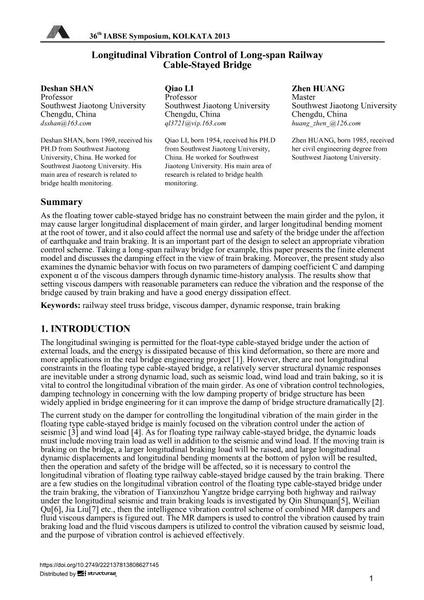Longitudinal Vibration Control of Long-span Railway Cable-Stayed Bridge

|
|
|||||||||||
Bibliographic Details
| Author(s): |
Deshan Shan
Qiao Li Zhen Huang |
||||
|---|---|---|---|---|---|
| Medium: | conference paper | ||||
| Language(s): | English | ||||
| Conference: | IABSE Symposium: Long Span Bridges and Roofs - Development, Design and Implementation, Kolkata, India, 24-27 September 2013 | ||||
| Published in: | IABSE Symposium Kolkata 2013 | ||||
|
|||||
| Page(s): | 1-5 | ||||
| Total no. of pages: | 5 | ||||
| Year: | 2013 | ||||
| DOI: | 10.2749/222137813808627145 | ||||
| Abstract: |
As the floating tower cable-stayed bridge has no constraint between the main girder and the pylon, it may cause larger longitudinal displacement of main girder, and larger longitudinal bending moment at the root of tower, and it also could affect the normal use and safety of the bridge under the affection of earthquake and train braking. It is an important part of the design to select an appropriate vibration control scheme. Taking a long-span railway bridge for example, this paper presents the finite element model and discusses the damping effect in the view of train braking. Moreover, the present study also examines the dynamic behavior with focus on two parameters of damping coefficient C and damping exponent α of the viscous dampers through dynamic time-history analysis. The results show that setting viscous dampers with reasonable parameters can reduce the vibration and the response of the bridge caused by train braking and have a good energy dissipation effect. |
||||
| Keywords: |
dynamic response viscous damper steel railroad truss bridge train braking
|
||||
